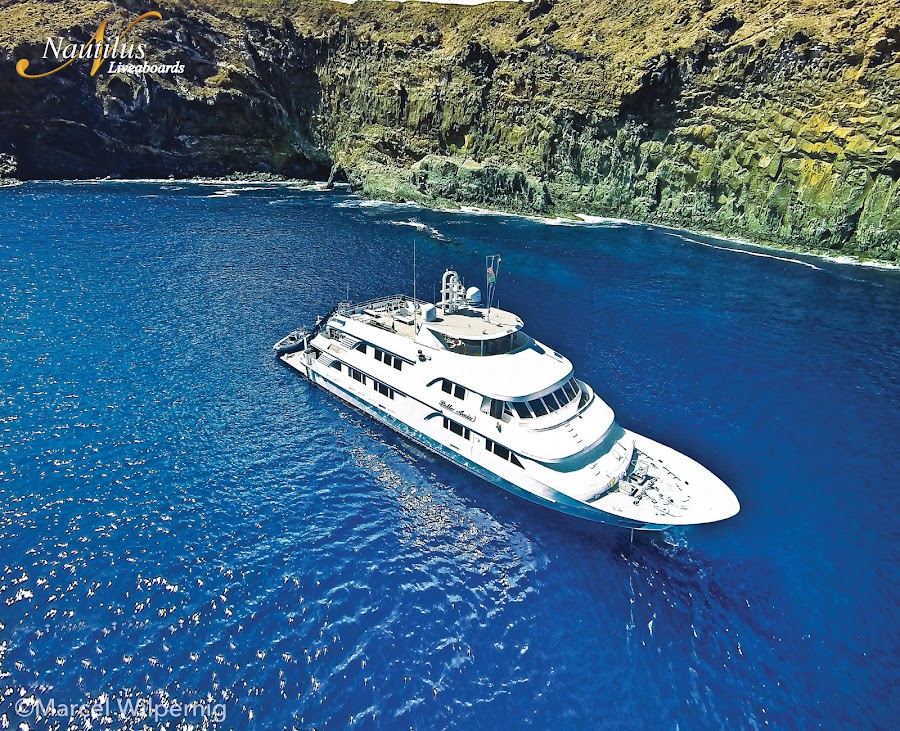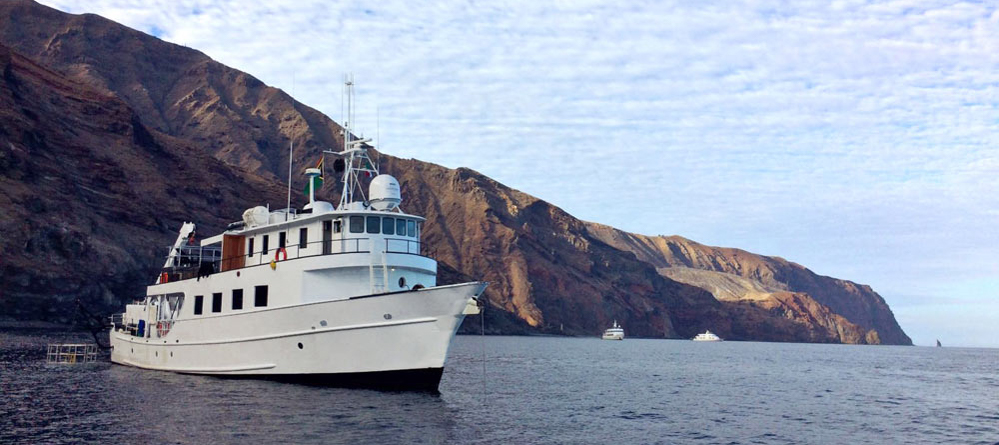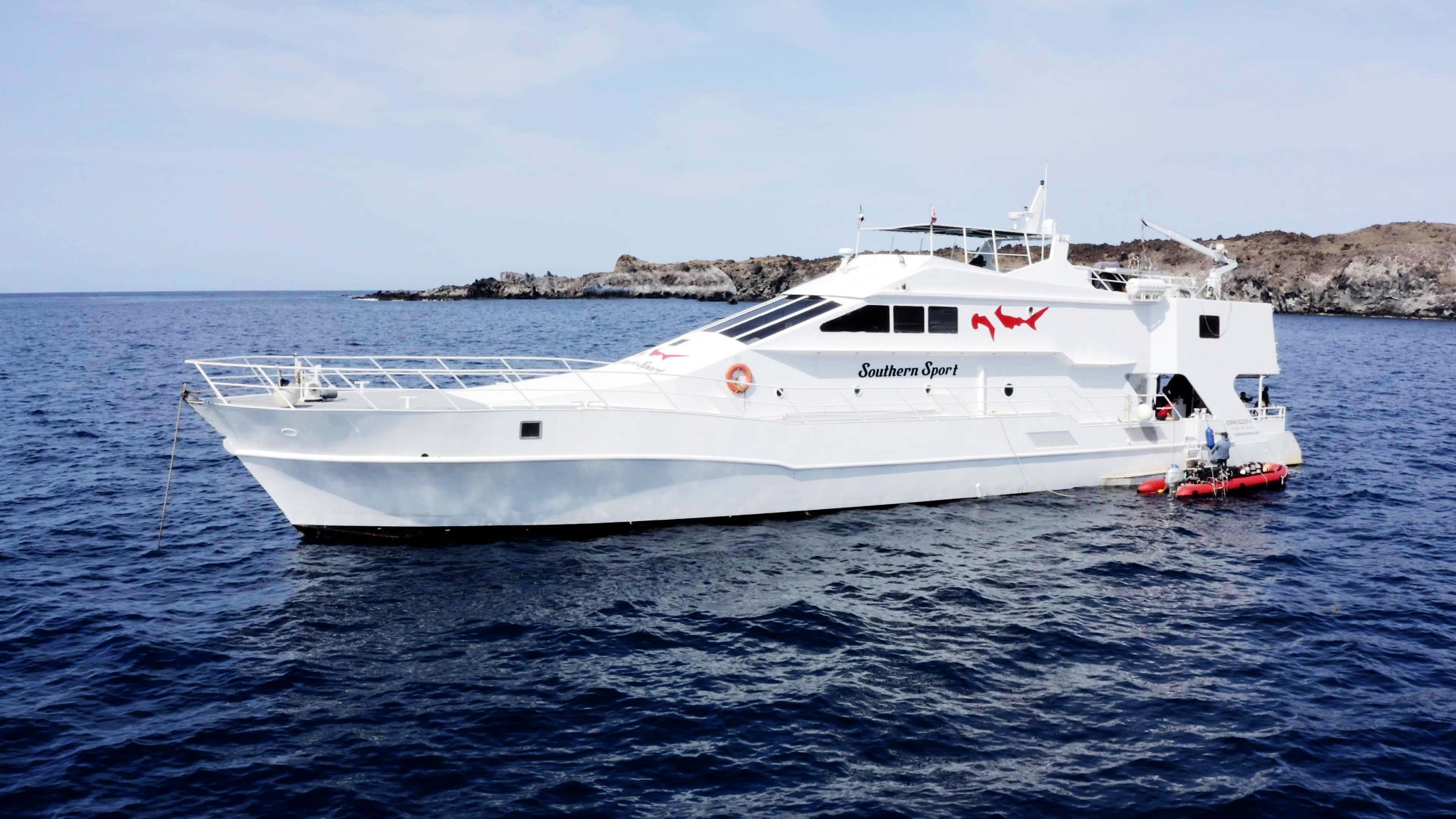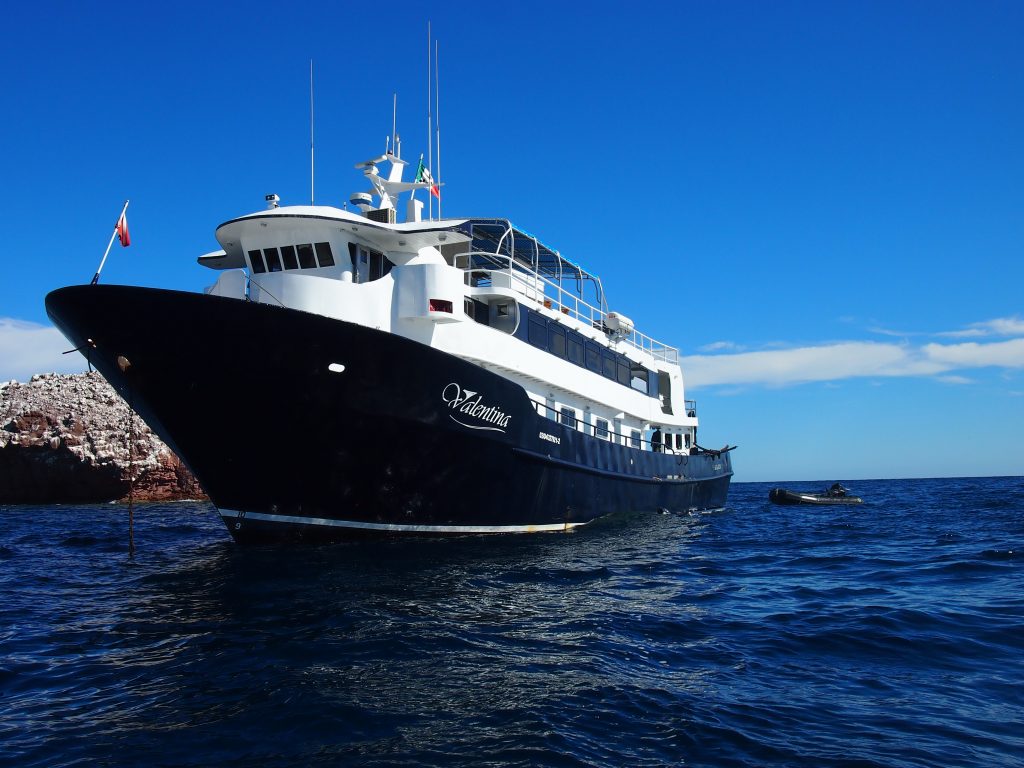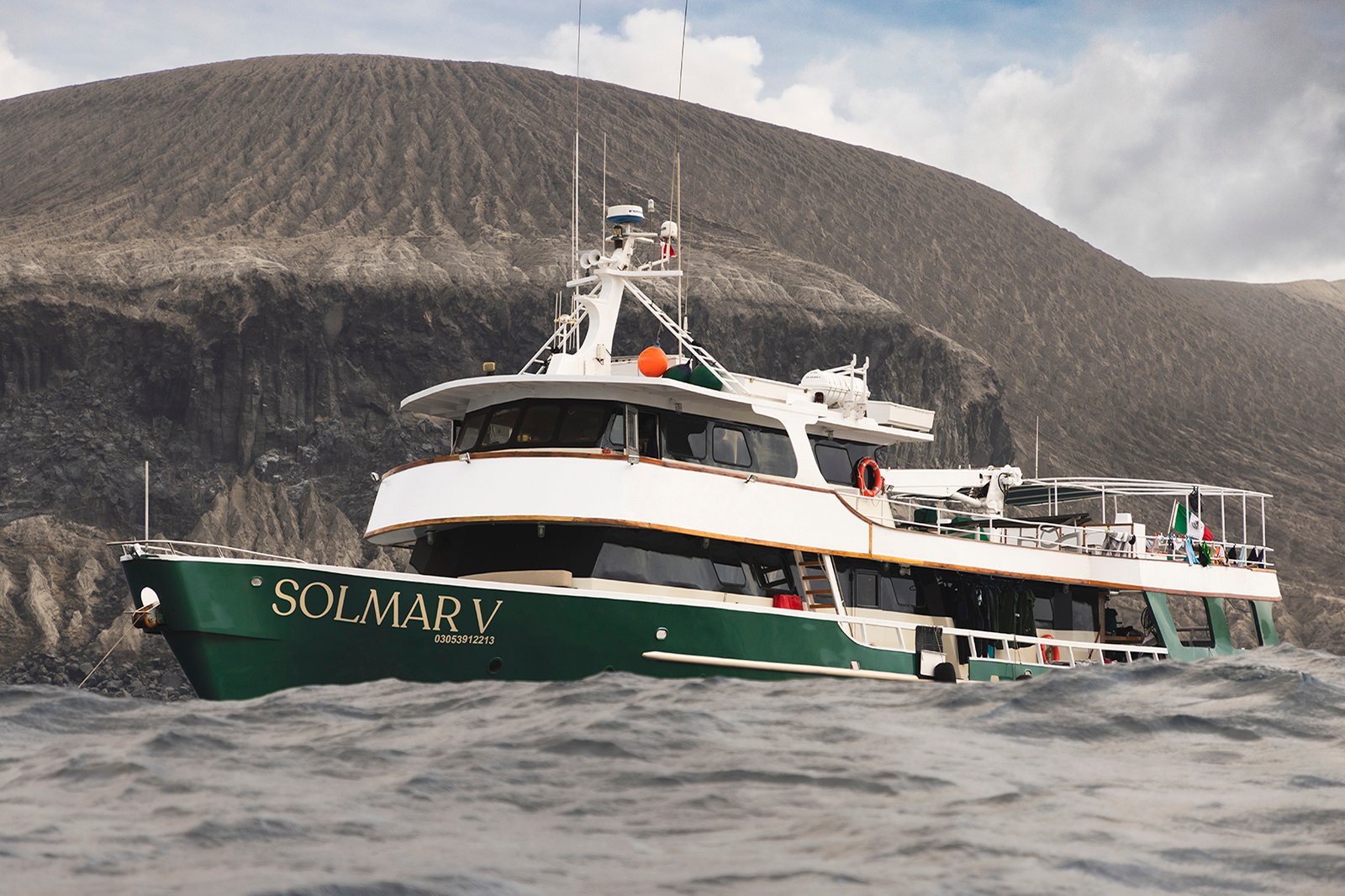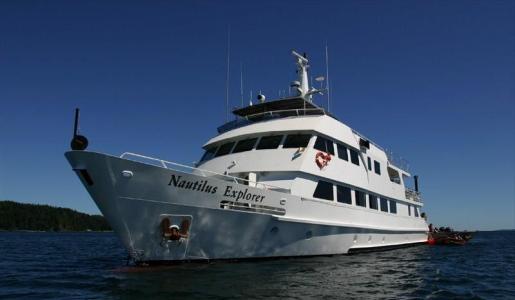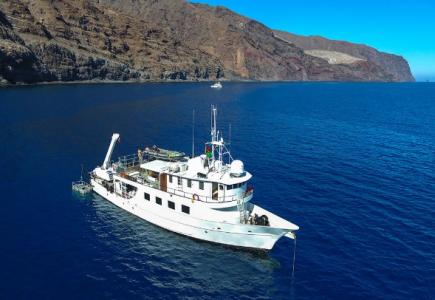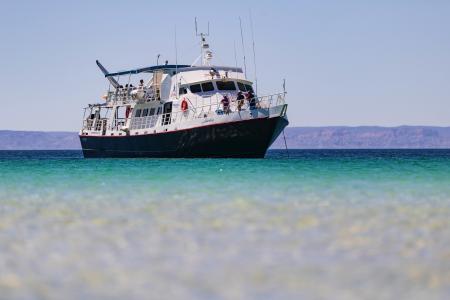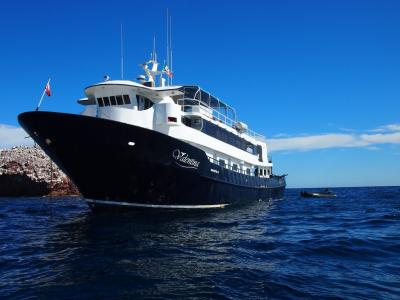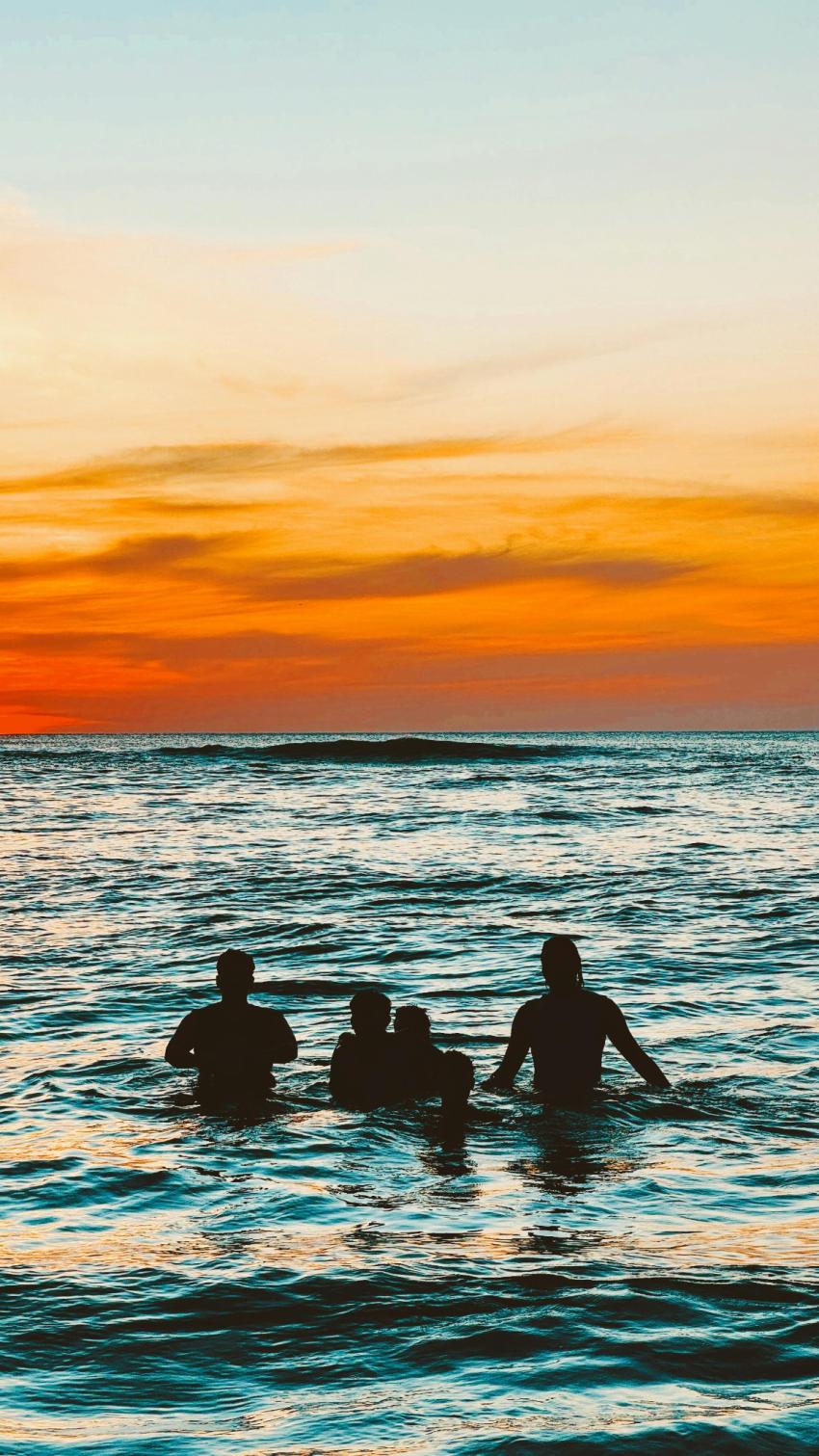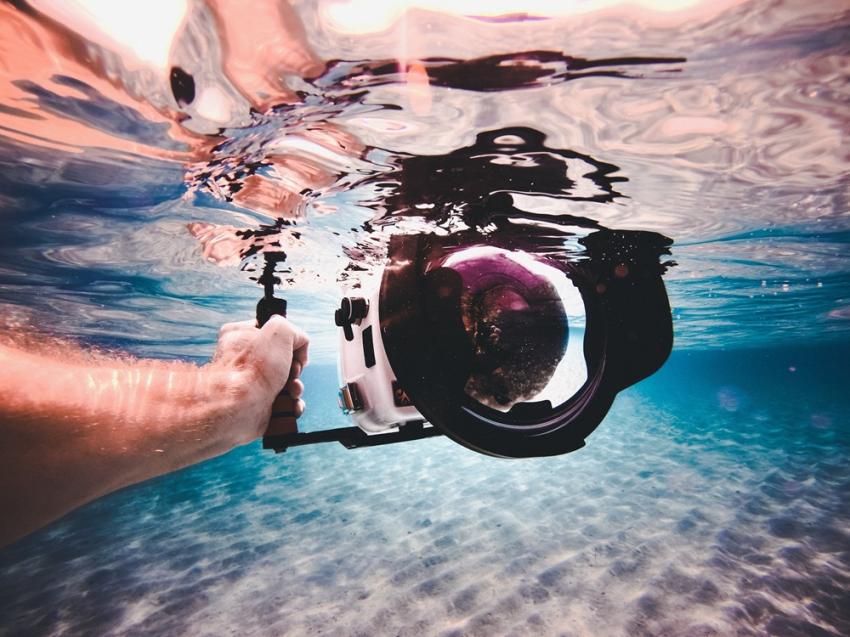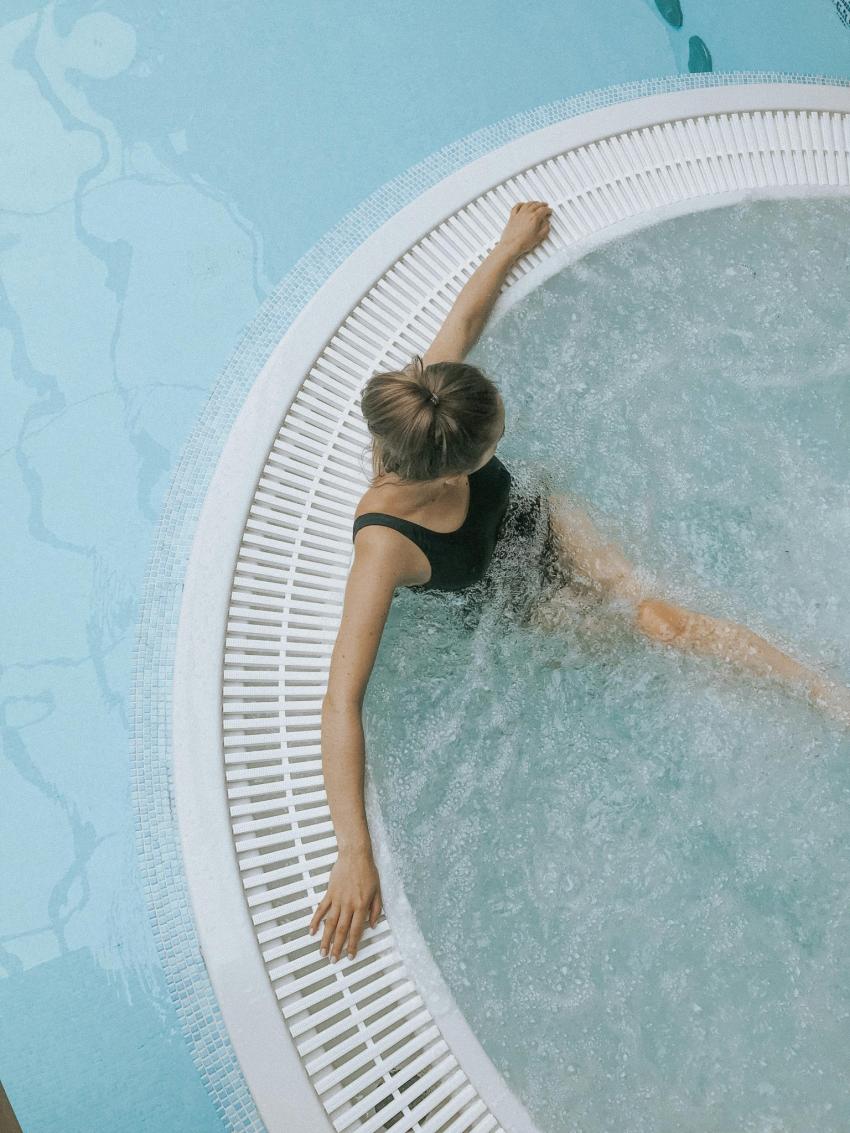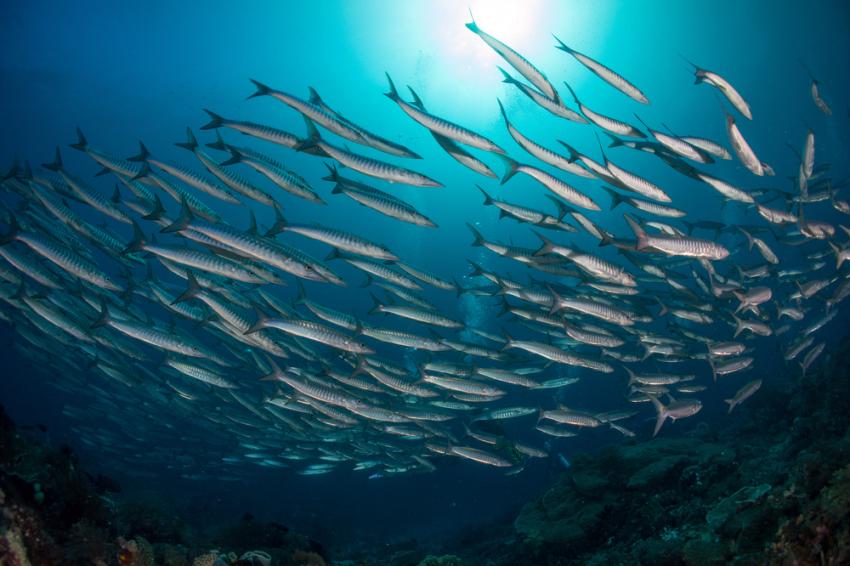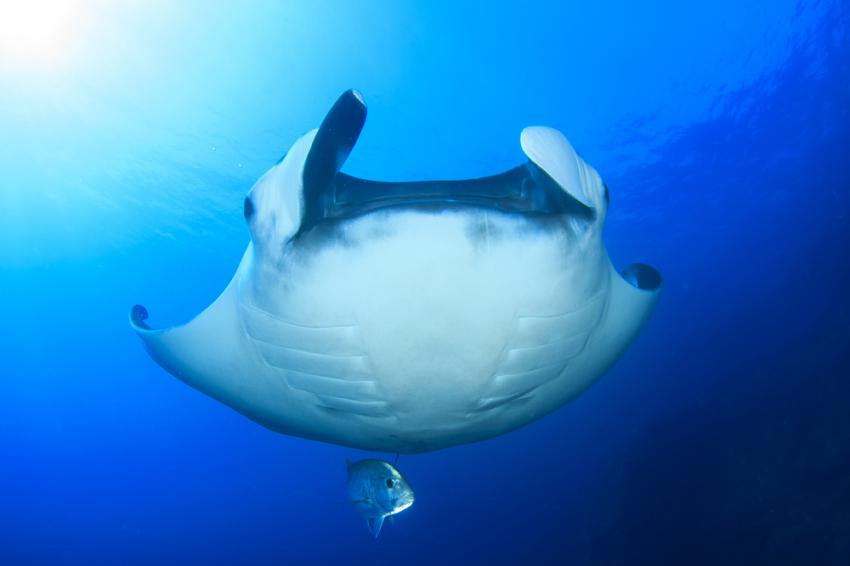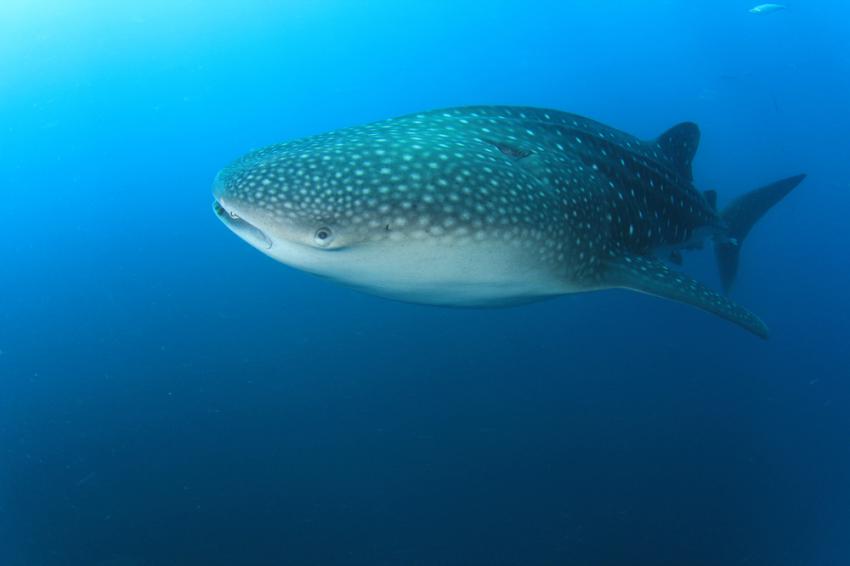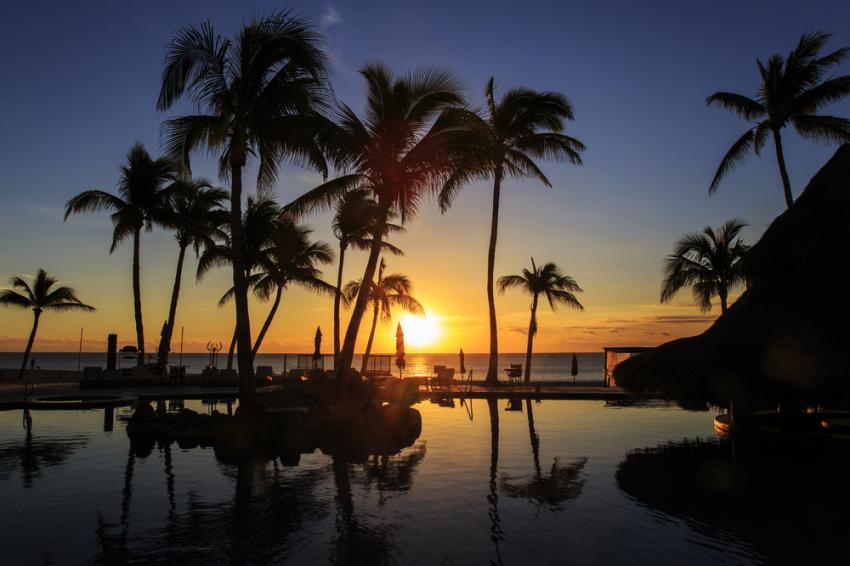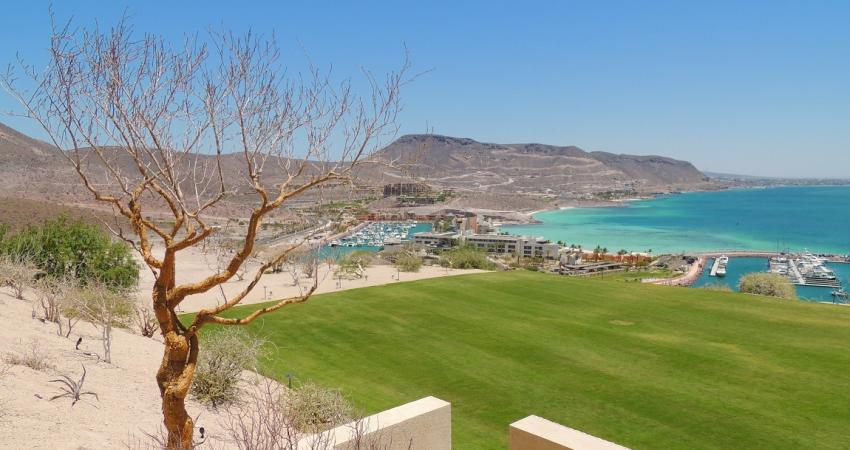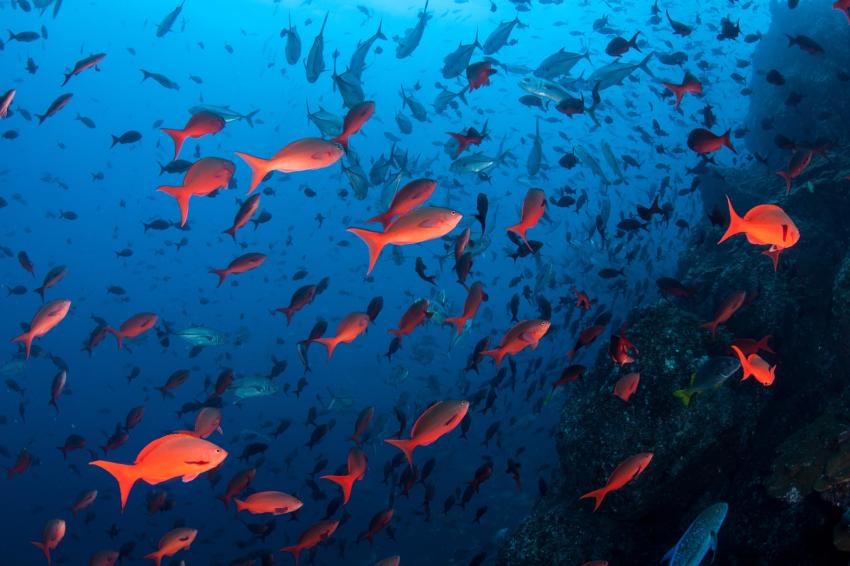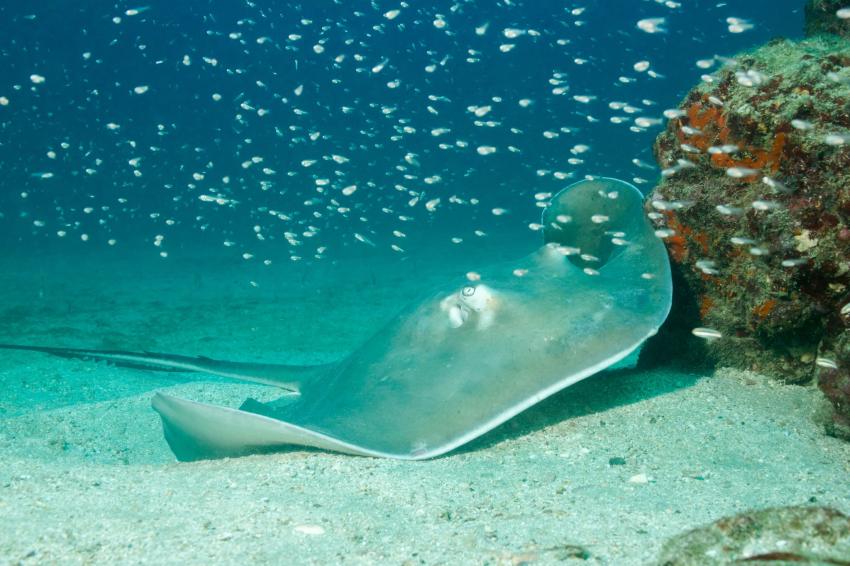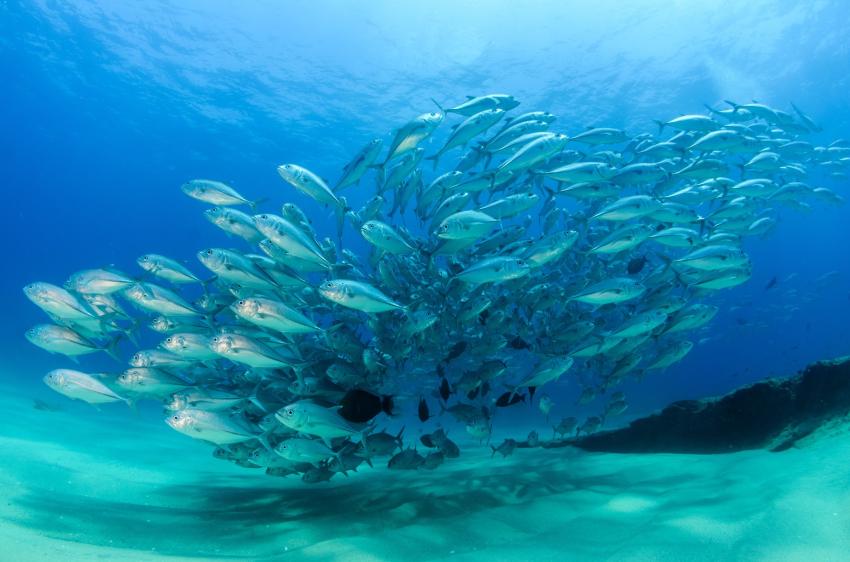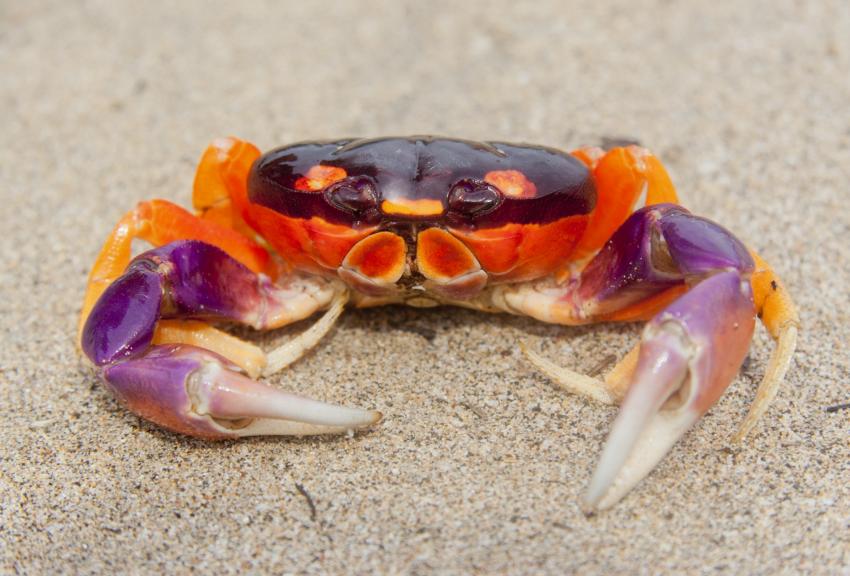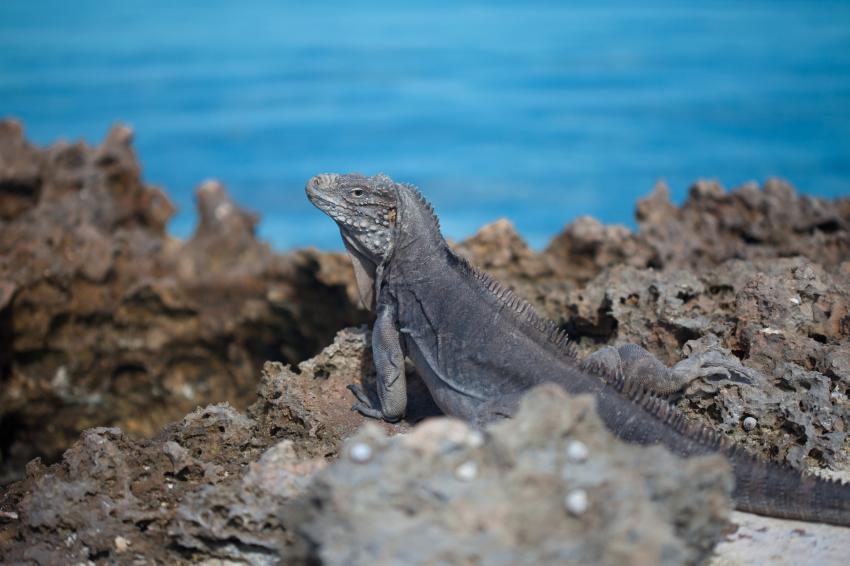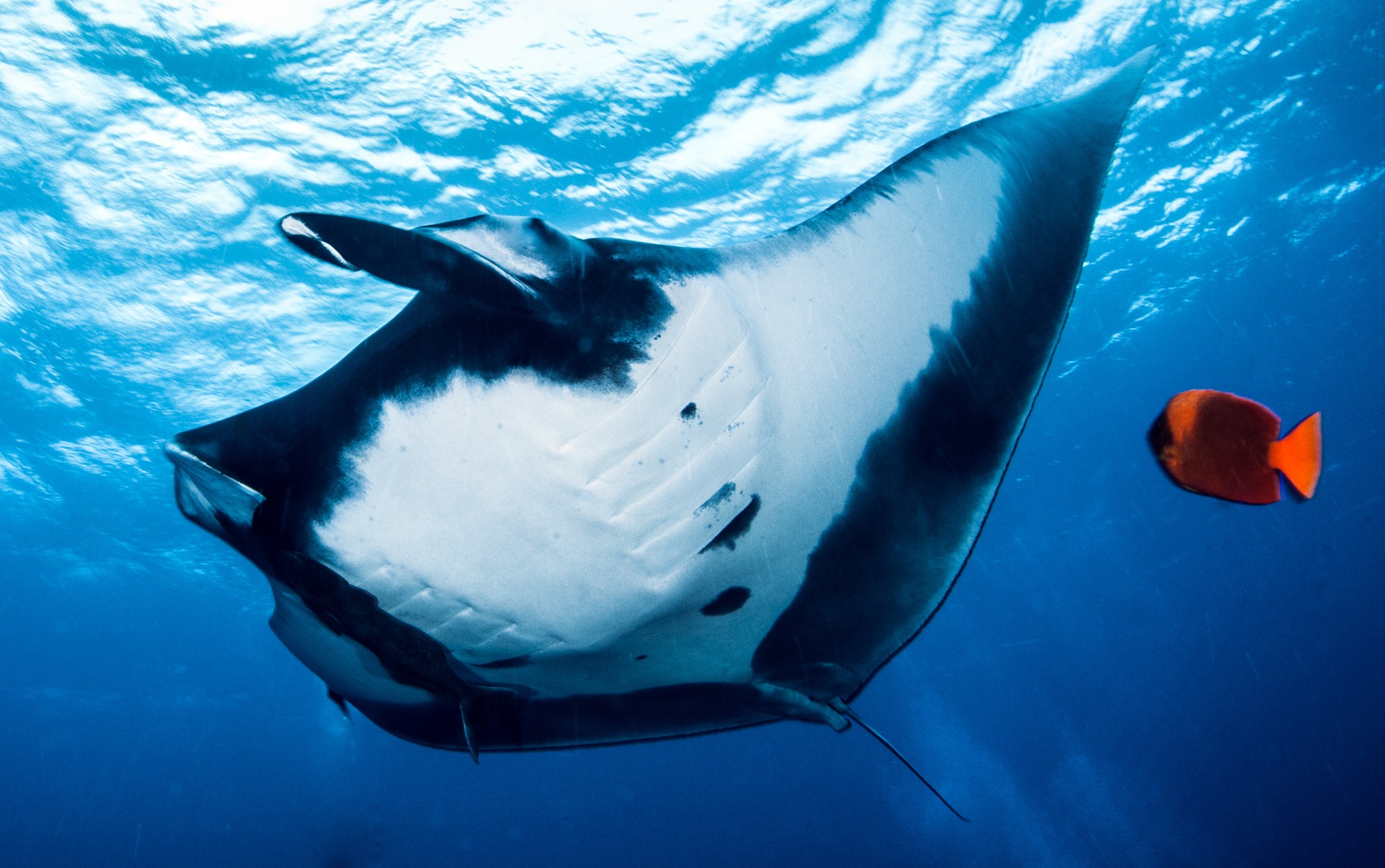
Socorro Island Liveaboard Diving
60% of divers returns to us
Best Socorro Island Liveaboards
Socorro Island Liveaboard Deals
Handpicked Socorro Island Liveaboard Collections
Scuba Diving in Socorro Island
Giant Mantas and Shark Encounters
Socorro Island and the surrounding Revillagigedo chain are famous for encounters with ocean giants. Divers here often find themselves surrounded by giant mantas (Mobula birostris) that circle cleaning stations and seem unusually curious about human presence. Bottlenose dolphins frequently join the show, darting in and out as if competing with the mantas for attention.
Shark diversity is another highlight. Hammerheads gather in schools, while silky, silver tip sharks, Galapagos, and white tip reef sharks patrol the slopes. Tiger sharks and whale sharks make rarer appearances, and seasonal humpback whales add to the spectacle during migration. Every dive feels dynamic, with the chance of meeting multiple species in a single descent.
UNESCO Heritage and Protected Marine Life
The Revillagigedo Archipelago, which includes Socorro, San Benedicto, Roca Partida, and Clarion, was named a UNESCO World Heritage Site in 2016. Its designation reflects the importance of this isolated volcanic region as a refuge for large pelagic species. Strict marine park protections limit human impact and ensure that biodiversity remains intact.
The underwater topography is striking: volcanic slopes, pinnacles, and deep walls provide structure for marine life. Coral coverage is sparse compared to tropical reefs, yet the ecosystem thrives on nutrient-rich currents. Massive schools of jacks, tuna, and reef fish shimmer through the blue, creating a sense of abundance that has earned Socorro its reputation as one of the Pacific’s most exhilarating scuba diving sites.
Liveaboard Adventures in the Revillagigedo Islands
Socorro can only be reached by liveaboard, with crossings from Cabo San Lucas taking over 24 hours. Most itineraries last 8 to 15 days, offering multiple dives daily and ample time to explore the region’s most famous sites: “The Boiler” at San Benedicto, the shark-laden pinnacle of Roca Partida, and the walls of Socorro Island itself
Must See Socorro Island Dive Sites
San Benedicto
San Benedicto is often the first stop on a Socorro itinerary and home to one of the archipelago’s most iconic - The Boiler. This underwater pinnacle rises from the depths to form a natural cleaning station for giant Pacific manta rays. Divers here are treated to some of the most intimate manta encounters in the world, as these massive animals glide overhead, circling gracefully and often lingering within arm’s reach. Bottlenose dolphins frequently join the action, while Galapagos sharks, hammerheads, and schooling jacks patrol the blue. The island’s volcanic slopes and rugged topography create dramatic underwater scenery, making every dive at San Benedicto a spectacle of both marine life and seascape.
Roca Partida
A small, barren pinnacle that barely breaks the surface, Roca Partida is the most legendary dive site in the Revillagigedo Islands. Its vertical walls drop into deep blue water where white tip reef sharks rest stacked together in rocky ledges. Surrounding them, vast schools of jacks, tuna, and reef fish swirl in dense formation, often attracting hunting sharks. Hammerheads, silkies, and silver tips are frequently sighted cruising the currents, while larger pelagics like whale sharks and even humpback whales occasionally pass by. Despite its size, Roca Partida offers some of the most action-packed diving in the Pacific, with a concentration of marine life that keeps divers wide-eyed from start to safety stop
Liveaboard Ports of Departure and How to Get There
San José del Cabo
Embarkation for many Socorro Island liveaboards begins in San José del Cabo, a calm and welcoming town at the southern tip of Baja California Sur with Los Cabos International Airport. Beyond its role as a gateway, San José del Cabo offers visitors a taste of authentic Mexican culture. The historic centre, with its traditional architecture and church overlooking the town square, is a charming place to explore before boarding. Travellers often linger in its quiet streets and shaded plazas, experiencing customs and traditions that balance perfectly with the excitement of a liveaboard voyage. San José del Cabo offers the surrounding coastline promises untouched underwater landscapes, making San José del Cabo both a departure point and a destination in its own right.La Paz
Another embarkation option is La Paz, located on the eastern shore of the Baja California Peninsula. Easily reached via Manuel Márquez de León International Airport, La Paz offers smooth connections and a relaxed pace before setting off. The port is just a short drive from the airport, making logistics straightforward for liveaboard travellers. Known for its tranquil atmosphere and strong ties to the sea, La Paz also serves as a hub for several diving destinations accessible by liveaboard, adding both convenience and character to the start of any Socorro adventureWhen To Go Diving in Socorro Island
Frequently Asked Questions About Socorro Island
How many dives do I get?
What scuba certification is required for Socorro Island?
Are there age restrictions for diving in Socorro Island?
How to dive Socorro Island?
How much does it cost to dive in Socorro Island?
Spaces on Revillagigedo Island liveaboards are limited and tend to sell out quickly, so booking well in advance is highly recommended
Is Socorro worth visiting?
Socorro Island Diving Reviews
Tips for travelers
Transportation – Getting There and Around
Liveaboard journeys to Socorro typically embark either from San José del Cabo or La Paz, both located in the southern part of Baja California Sur.San José del Cabo sits at the tip of the peninsula and is known for its calm atmosphere and cultural charm. Before boarding, travellers often spend time wandering the historic centre, with its traditional architecture and church-lined square. La Paz, on the eastern coast of the peninsula, is another embarkation option. The city is served by Manuel Márquez de León International Airport, located just a short drive from the port
Accommodation Options: Dive Resorts and Hotels
Cabo San Lucas offers a wide range of accommodations, from budget hotels to luxury resorts. Many liveaboard operators provide recommended hotel lists, and some coordinate transfers for added convenienceMarine Parks and Other Fees
Several additional expenses should be considered when planning a Socorro liveaboard trip. Transportation to and from the vessel, as well as any personal purchases on board, such as T-shirts, souvenirs, Nitrox fills, or equipment rental, are usually billed separately from the base fare.National park fees, set by the Mexican government, are mandatory for all divers. These are calculated per person and per diving day, with the amount depending on the length of your itinerary. Fees are subject to change, so it is best to confirm the current rate before your departure.
Crew gratuities are customary and greatly appreciated, typically offered at the end of the voyage in recognition of the service and support provided throughout the trip
